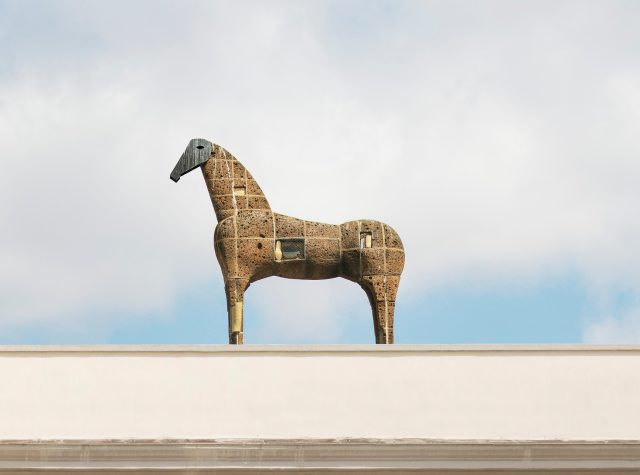The Madre · museo d’arte contemporanea Donnaregina is located in the heart of old Naples, on what is known as the “Via dei Musei,” just a stone’s throw away from the Duomo, the Museo Archeologico Nazionale and the Accademia di Belle Arti, where the ancient San Lorenzo district is situated.
The Museum takes its name from the building that hosts it, the Palazzo Donnaregina, which like all the surrounding area owes its name to the Monastery of Santa Maria Donnaregina, founded by the Swabians (13th century) and then expanded and rebuilt in 1325 by Queen Mary of Hungary, wife to Charles II of Anjou. All that remains of the ancient monastic complex is the church of the same name, which overlooks Piazza Donnaregina, built in the Baroque period, and the “old” 14th-century Gothic-style church of Donnaregina, which has previously hosted exhibitions and special events organized by the Museum.
Dating back to the 19th century the building is an outstanding example of historical stratification, which is characteristic of the historical district of Naples. Originally, the building occupied almost an entire insula produced by the intersection of cardi and decumani in the Graeco-Roman road system. Halfway through the 19th century the building was bought by the Banco di Napoli, which turned it into a Banco dei Pegni (a place where people could pawn their possessions). Between 1845 and 1872 two wings were added to the building, and the façade overlooking Via Settembrini was refurbished by creating the main entrance, including a foyer and two flights of stairs. After the addition of a reinforced concrete section in the early 20th century, in the second postwar period the palazzo underwent several architectural modifications. These were structurally reinforced following the 1980 earthquake. In the 1980s the building was leased to the Provveditorato agli Studi di Napoli (School Administration), after which it was returned to the Banco di Napoli as a warehouse. Following the major damage and the static instability caused by the flood of 2001, the building was abandoned.
Purchased in 2005 by the Campania Regional Government to be turned into a contemporary art museum, it was leased free of charge for use by the Fondazione Donnaregina per le arti contemporanee. The building was restored and refurbished as a museum to a design by the Portuguese architect Álvaro Siza Veira, 2012 Golden Lion for lifetime achievement. Thanks to the collaboration of the Studio DAZ-Dumontet Antonini Zaske, associate architects of Naples, in addition to the section almost entirely dedicated to exhibitions, a library, a mediatheque and a bookshop/cafeteria were also built, for a total of 7,200 square meters, 2,662 of which destined to be used for the different exhibition levels.
On June 10, 2005 the Madre museum inaugurated its spaces with the opening of site-specific installations in the rooms on the first floor; between 2005 and 2006 the whole building was completed, and the rooms on the second floor were opened to the public. These rooms host part of the collection, while the rooms on the third floor are used for temporary exhibitions.
Madre Museum is the witness of a story that made Campania region a crossroads of contemporary arts, oriented to studying and documenting the past through contemporary sensitivity and languages and so able of acting in the present and outlining the future.
